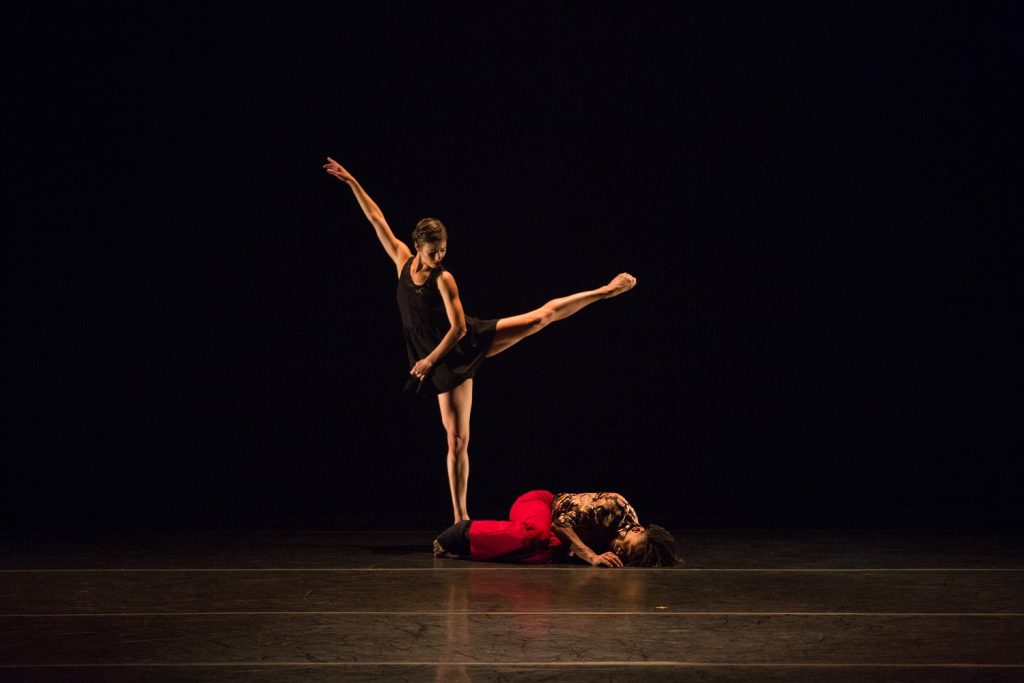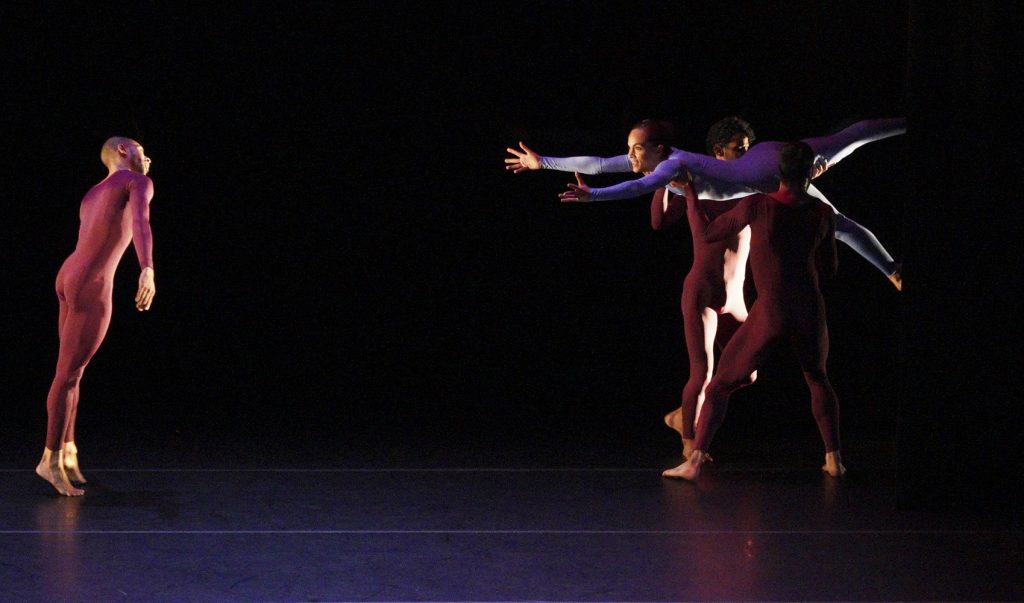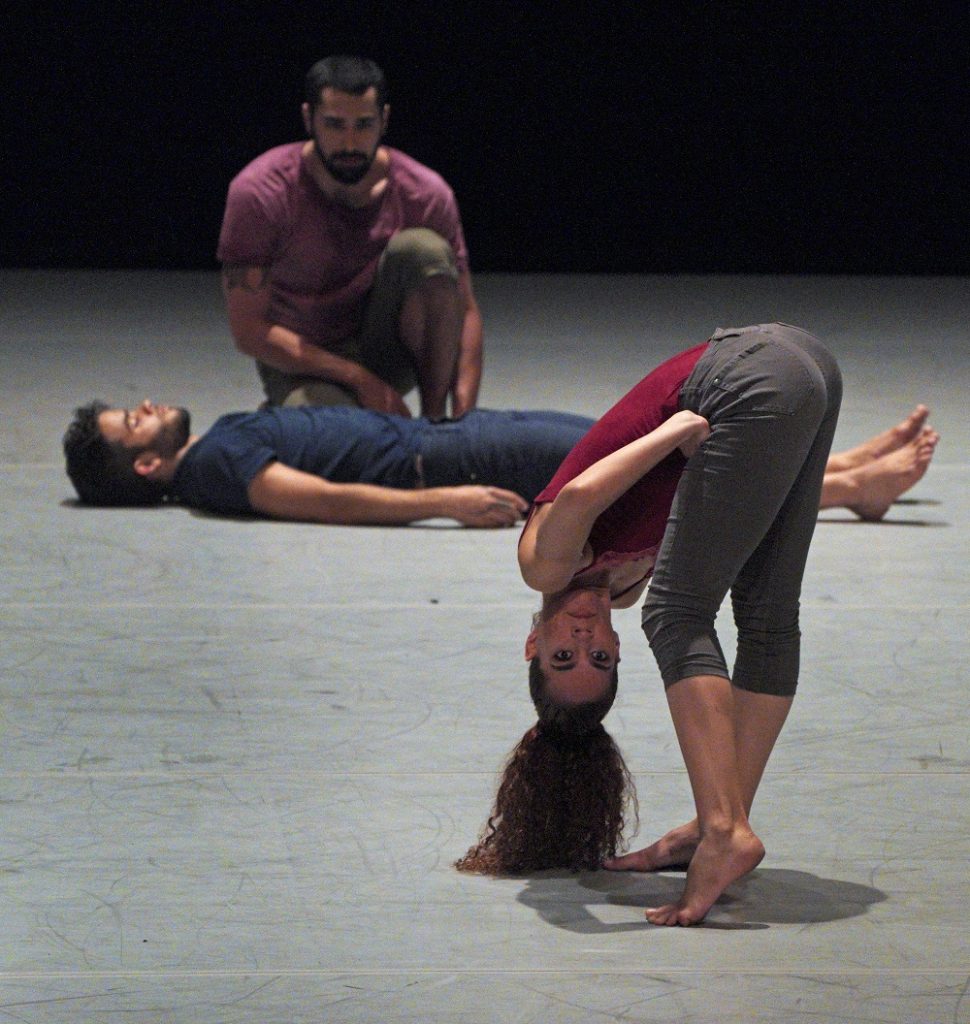The Malpaso Dance Company, at the Wallis Annenberg Center for the Performing Arts opened the program with the classic Merce Cunningham’s Fielding Sixes (1980) on March 28 – 30, 2017. The music was composed by John Cage very much in the feel of Irish step and Contra-dance. The performers moving at sharp angles, coupling off into physical fugue forms to a vigorous flute; they’re arms placed rounded and lowered to their sides while the lower half of their bodies performed difficult feats; leaps, turns, foot work, strictly with the strength of their well-trained bodies. This music was an about face from Cage’s often cacophonous and at times sparse sounds.
The company of 11, having begun their reputational journey from Cuba some seven years prior, is on the threshold of developing a world-wide reputation. There is no doubt this quite spirited group is technically expert. The strong and supple bodies and unique shapes of the dancers exemplified by pastel body suits, expressed their individuality as performers. The Cunningham piece epitomizes his sense of form, movement and design. The company’s youthful enthusiasm and energy emphasizes the genius that is Cunningham. However, something yearned inside to find the subtext and sensibility of that genius in the Malpaso dancers. That message somehow got lost in the technique and craftsmanship, and artistic discernment never quite reached the heights of expectation.
On the other hand, OCASO, choreographed by Artistic Director and Co-Founder, Osnel Delgado, with the lovely Daile Carrazana , is a beautifully choreographed pas de deux. It is complex in its intricate weaving of the couple’s bodies which almost never free themselves from one another until necessary. Then ending in an embrace so tender and emotional that one relaxes into the performers ardent joy of togetherness.
Delgado has chosen pieces of music beginning with a sound scape by Autechre – Parallel Suns which appears to replicate planetary shattering of sound with a thunderous impact which bookends each musical movement of Ocaso. Kronos Quartet’s White Man Sleeps mirrors the perpetual motion of Delgado and Carrazana’s tireless explorations. Max Richter’s pulsating chordal structures and insistent love theme touches the heart. This splendid piece not only is well explored and choreographed but its intention is clear and intriguing, while guiding the audience through the many faces of the relationship.
When looking over the evening, Ser (Being) was the least impressive. This initial presentation was done by novice choreographer, Beatriz Garcia and danced by Dunia Acosta, Fernando Benet, Beatriz Garcia. The pastel clad dancers were also costumed by Garcia. However, this piece never got further than the surface. Perhaps because Garcia’s jobs were hyphenated: Choreographer, Costumer, Dancer. Perchance, when embarking on an important choreographic debut, one might want to concentrate on the major aspect of choreography. This might help give a more exterior viewpoint of the artistic message one is attempting to convey.
Again, the use of constant motion and the weight and flexibility of each of the bodies presented a surface examination of what this piece might be, which makes this a work in progress. It would not suffer from further exploration.
The final piece of the evening, Tabula rasa, (1986) was choreographed by Ohad Naharin, Isreali/American contemporary dancer and choreographer, who was Artistic Director for the Batsheva Dance Company. While with the company, he not only choreographed but developed the world-renowned movement language called Gaga.
The composer for this piece, is Estonian minimalist, Arvo Pärt whose work embellishes this brilliant tour de force, challenging the dancers and stunning the audience with its surprising, chaotic and creative action. It goes from tumultuous running and displacement, then trading places with adagio movement, the Naharin and dancers redesign the form into circles. Finally, the group disappears into the darkness leaving a dance pair to explore the disconnection and counter point of each other’s bodies. When the pas de deux breaks up, the company re-enters diving and throwing themselves on the ground in spectacular disarrangement while defying gravity in unison and flying through the air – off balance.
The entire piece is memorable and definitely impinges and communicates. In one very human section, we find a female in search of her male counterpart, but no matter where she looks she is either rejected or pushed away – finally to find what she thinks may be “him!” This brings such recognizable reality and humor to the piece that one can hear an audible sigh from the audience.
A powerful moment in Tabula Rasa is the introduction after a long silence of a young male dancer stepping sideways onto the empty stage, he stops, then almost unintelligibly begins to rock side to side. This step is then repeated like a meditation, a mantra, that introduces each of the 11 dancers and takes several fascinating minutes to complete. It leads to an emotional ending which seems to come all too soon.
Although the piece was done in 1986, with each restaging, Naharin works with the company of dancers to help them explore and research the discovery of new intentions, structure, organization, and metaphor. It is this that gives his work and the dancers a fresh new personal and powerful look at the energy and artistry that is required to create a work of art. This is the kind of work that will catapult a company into a new level of performance. Malpaso, if it continues to explore the limits of their excellence and beyond, while being clear about the context of their work will be a potent competitor within the world of dance.
For information about The Malpaso Dance Company, click here.
For information about The Wallis Annenberg Center for the Performing Arts, click here.
Featured image: Malpaso Dance Company performs Tabula Rasa by Ohad Naharin at the Wallis Annenberg Center for the Performing Arts on March 28, 2019, (l-r) Abel Rojo, Daile Carrazana, Armando Garcia, Manuel Duran, Fernando Benet, Dunia Acosta, Esteban Aguilar; PHOTO CREDIT: Lawrence K. Ho

















